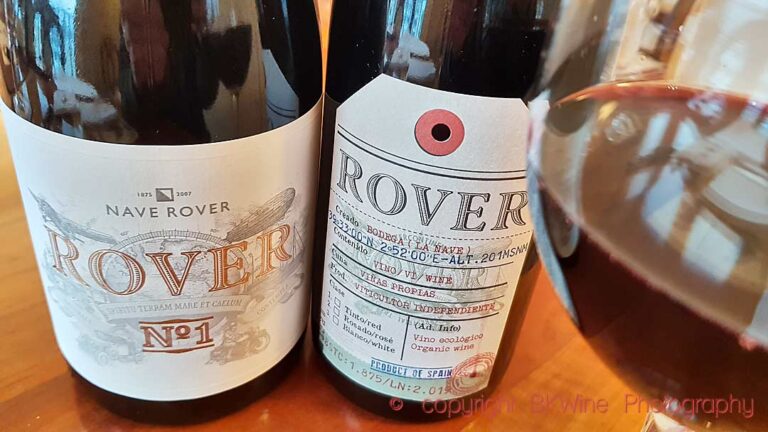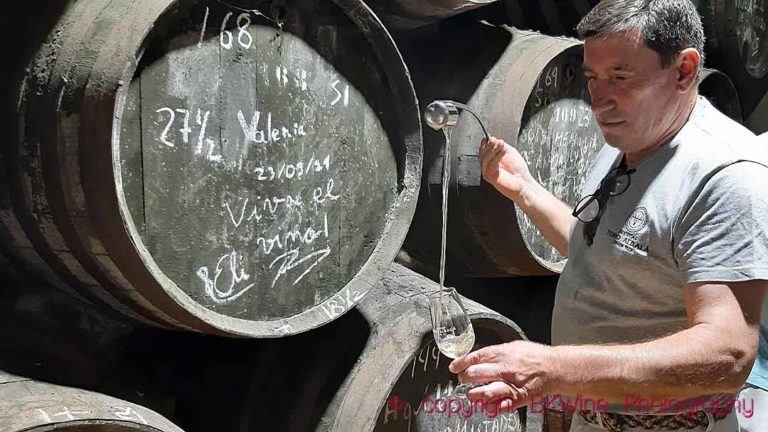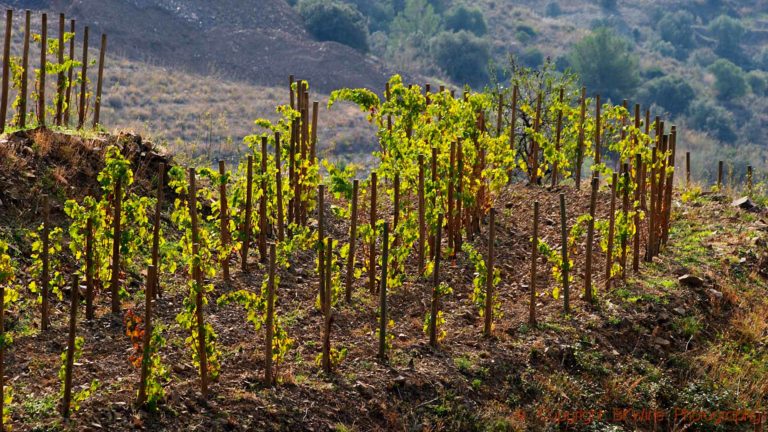A broad selection of sherry with some gorgeous and affordable wines
We say it again: sherry is a fantastic wine. There is a big span, from bone dry almost salty finos, to super-sweet blockbuster wines from the Pedro Ximenes grape. It is a wine that is often drunk as an aperitif, with tapas, but that also works great with food, cheese and dessert, depending on the type of sherry it is. When the great sherry producer Gonzalez Byass’ head winemaker Antonio Flores came to Sweden he met BKWine Magazine. Our reporter Carl-Erik Kanne reports from a thorough review of the wines from the sherry region.
A grey October day the ground floor at 18 Gårdsvägen Street was filled with the most delightful aromas of sherry in different versions. There were no less than 13 different types of sherry from Gonzalez Byass’ portfolio that I was about to taste together with Antonio Flores, their chief winemaker. With us was also Carlos González-Gordon, sales manager and member of the owner family.
Not only the scents showed great variety, the colour spectrum from the 13 wines were very diverse, from bright yellow with some opacity in the first wine to brownish green tar colour in the last wine!
In his introduction Antonio Flores showed how of González Byass go about producing their wines, in line with the traditional methods in the Jerez region, for example the solera system.
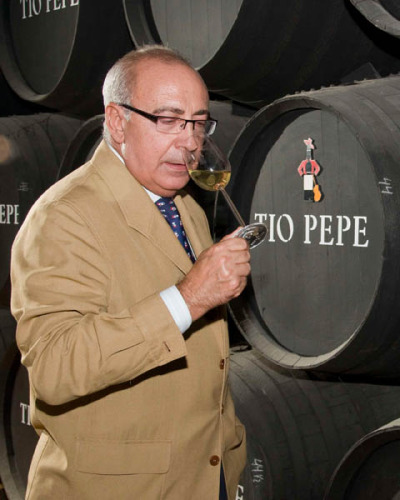
Antonio Flores underlined that the González Byass consistent wine quality – that makes a bottle of Tio Pepe tastes the same wherever it is drunk – is based on five pillars:
- Albariza
- The grapes Palomino, Pedro Ximenez (PX), and muscatel
- Flor (a yeast cap)
- Crianza oxidation
- The solera system
These five pillars are of course also the factors that generally make sherry to the unique beverage it is, and it may therefore be appropriate to briefly explain what they stand for.
Albariza
Albariza is a very porous almost white soil with mainly chalk and lime ingredients. The porosity means that it is able to absorb the rain that falls mainly in the winter, and then deliver moisture to the vine roots during the dry and hot summer period. The white colour and the formation of a dry crust during the summer helps to preserve moisture in the soil.
Another factor is that the DO (Denominación de Origen) area of Jerez is subject to sea breezes from the southwest, the poniente, that during the night brings in cool air. It provides an additional moisture absorbed by the ground. A sort of natural irrigation!
The grapes
Palomino is a fairly neutral grape with low acidity that has the ability to both provide good harvest yields and also to withstand the heat and lack of water very well. In Jerez it is not the terroir and the concentration of fruit by low yields that adds character to the dry wines. Instead it is the way they are aged. Palomino is therefore ideal.
Already at harvest time it is determined by the winemaker if the grapes will be classed as fino or oloroso material. In the latter case, the wine undergoes oxidative storage after fermentation (see below).
Pedro Ximenez (PX) is naturally sweet and is dried on straw mats after harvest to give even higher sugar concentration. Sugar contents in the must can be up to 300 g / l. The grape is used for the production of sweet sherry. It is very common, and allowed, to use grapes from Montilla Moriles, a district further inland, where the grapes dry more easily because here you will not have the moisture from the ocean.
Moscatel is used for the production of sweet wines, but only in very small quantities.
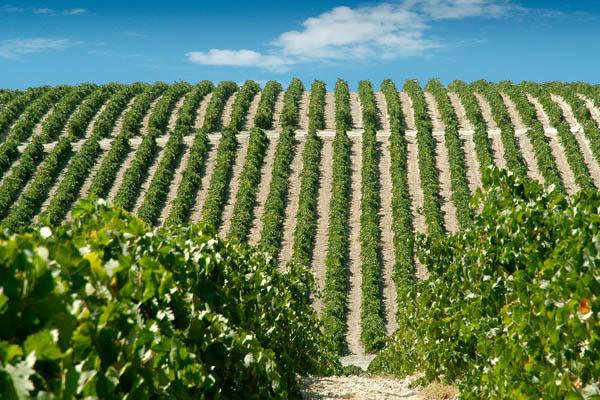
Flor
Flor is created by a natural yeast that settles as a cap on top of the wine and prevent oxidation.
After pressing and alcoholic fermentation, usually nowadays in stainless steel tanks, the winemaker makes an initial assessment of the character of the wine. If it is to transformed into fino the alcohol content is adjusted to just under 16%. At higher levels the yeast dies.
The wine is then put in barrel. For the flor to develop, a certain space with air above the wine is needed. Therefore they fill the barrel to only about five sixths. The oxygen in the barrel is consumed gradually by the yeast which also consumes any residual sugar, volatile acids, glycerine and alcohol. When these nutrients for the yeast are finished the flor dies by itself. The process is kept alive by new wine added into the solera system (see below). This biological process creates the taste of wine along with a slow extraction from the old casks used.
When the flor no longer develops the winemaker must determine whether to allow the wine to oxidise more to become an amontillado. In this case, they add alcohol up to about 20%.
All fino and amontillado sherry is in principle produced in this way.
The wines are light or lightish in style since the flor reduces the glycerine. An amontillado may get a darker colour through the oxygen.
Crianza oxidation
Grapes that have been classified as oloroso never undergo the flor process. They are fortified after fermentation to 17-22% and transferred to old barrels filled to five sixths. The air pocket gives an oxidation.
The wines become more powerful due to the flavours extracted from the barrels and the higher degree of glycerine. The colour becomes dark brownish red.
Wine named palo cortado is a special case (reinforced to 17-22%) and different wine producers have different ways to make it. In principle, one can say that it is a cross between an amontillado and an oloroso. It has the colour and the power in the taste as an oloroso, but the nose of an amontillado. The oxygen in the barrel is kept to a minimum for a very slow oxidation.
All the wines made from the palomino grape are fermented out to dry and have various levels of alcohol added. The alcohol is added after fermentation.
The sweet wines produced from the PX and muscatel grapes are normally allowed to ferment only to an alcohol content of about 5% before being fortified to between 15 and 22%. PX wines are often dark brown and after ageing they are more or less viscous, almost black with residual sugar of up to 400 g / l.
They make different blends of dry and sweet wines to produce the different styles of sherry that has been on the market since long, for example, cream sherry which is usually a mix between an oloroso, and a PX.
One cannot talk about the barrel aging in Jerez without explaining the 5th pillar that maintains a consistent wine quality.
The solera sytem
Basically, the following happens:
I described above that the wines were classified at different times by the winemaker and the young wine is classified after fermentation and gets to spend some time in a “waiting room”, a so called sobretabla, where a new classification is done, depending on the character of the wine. The barrels used for ageing are old and should have no oak character left.
Solera system is a dynamic process where in a chain process of wines being drawn from one barrel to another new wine replaces some of the oldest wine. Since the rules in Jerez says you should never replace more than 1/3 of the wine each year in a solera, this means that all sherry must be stored for at least three years.
The system is generally illustrated with barrels stacked on top of each other where the lowest row of barrels is called solera. From these you draw the wine to bottle. The barrels in the layers above are called criaderas (nursery). The bottom row (above the solera) is criadera number 1, the second row criaderas number 2, and so on. A solera system can contain 8 criaderas or sometimes even more.
How does the wine taste?
And now for the tasting. In the first five glasses we tasted through “the various phases of a Tio Pepe”, as Antonio Flores said.
The first the glass contained a young wine from this year’s harvest and was the result of a quick first fermentation and a slow secondary fermentation. Yellow colour with some opacity, moderate acidity, good fruit. Unusually tasty for such a young product! The future of the wine was not yet determined, but it may become a fino.
The second glass contained a Sobretabla Fino with an alcohol content of 11.9%. It was dry, but with some acidity, pure fruit, hints of citrus and a good aftertaste. The wine was pure yellow colour and is the base wine for fino in the González Byass solera system. In this case, it was intended as a third criadera. A wine that could be drunk with a certain pleasure already as it is.
In the next glass we have come further in solera process and the wine has after 4 years in barrels become a finished Tio Pepe Fino. This wine has 15% alcohol, is bright golden yellow, clear. Deep aromas of yeast, almonds, apples and very dry flavour with hints of dried fruit and salt. Long aftertaste. Delicious with the salted almonds! Antonio Flores called this wine Andalusian sunshine in a bottle!
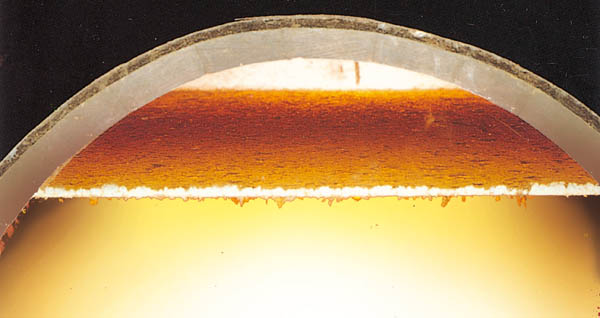
In the 4th glass the flor has disappeared and the wine has become the “victim” of some oxidation.
This is a solera called Vina AB Amontillado aged for about 10 years in barrel. The yellow colour has a brown tinge, the fragrance has a certain oxidized tone with hints of yeast, almonds, nuts and vanilla. Dry taste with flavours from the barrel ageing.
Next was one that was a dark amber colour and contained the last wine in a biological process. Antonio Flores called it a Tio Pepe that has become old and wise, but it was an Amontillado VORS Del Duque which was more than 30 years old. Dark golden yellow, some element of yeast in the powerful bouquet dominated by dried fruit and aromas from the long barrel ageing. Dry powerful taste with burnt notes and a long aftertaste.
More oxygen in the wine
The second half of the tasting, the oxidized, started with the fifth glass with the base wine for González Byass Oloroso, Sobretabla Oloroso. Primary aromas from the fruit are still there, but the wine has a darker golden colour and now has a more oxidative character. Dried fruit and some fieriness from the alcohol, fortified up to about 18%. The flavour is richer than that of the Fino and with hints of dried fruit.
One begins to sense what character the wine can get after many years in the solera system. Very interesting to compare to the contents of the second glass.
Glass number six contained Alfonso Oloroso that has spent 8 years in the solera and has had time to get a distinctly darker colour. The aroma is full of dried fruit and even with hints of character from the barrels. The flavour was rich and flavourful with hints of dried fruit, nuts. Long aftertaste with hints of sweetness despite the fact that the residual sugar was only 3.5 g / l. The explanation according to Antonio Flores was the relatively high glycerine content (about 10-12 g / l).
Then came the interesting version called Palo Cortado in the seventh glass: Leonor Palo Cortado. There are various explanations for how palo cortado arose originally, but today at Gonzalez Byass they take a wine that is meant as a fino and fortify it to 18% alcohol and let it age in the solera system for 12 years (on average).
The colour is golden brown and the wine’s aroma is reminiscent of amontillados, with almonds and nuts, but the taste is distinctly stronger with a long aftertaste of dried fruit
The alcohol content was 18% and still it is 100% palomino in the bottle.

As a special variant glass number eight was a Palo Cortado with a vintage denomination, Añada Palo Cortado 1982. The wine was bottled in November 2011, had a dark golden colour and aromas of tobacco, raisins, boat varnish. The taste was soft raisiny and nutty and less distinct than an oloroso. Long, dry aftertaste again from 100% palomino. This wine has not passed through the solera but was made in a manner similar to that colheita-port wine. Here, however, smaller barrels are used, but the wine is left alone in the casks throughout the ageing period. They produce very small quantities of this wine, and the price tag is in consequence.
As we are on the subject of old wines it was natural to continue with glass number 10 which contained Apostoles Palo Cortado VORS. This wine is a cuvée composed of 87% palomino and 13% PX. The wine has aged, after fortification, for 12 years in separate soleras with barrels of American oak. At the end they have been blended and aged again in its own solera where the wine was kept for another 18 years.
The result is an amazing wine in both the nose and palate. The wine is called Vino Amoroso by Gonzalez Byass.
Glass number 11, Matusalem Oloroso VORS had the PX-content increased to 25%. The wine is made in much the same way as Apostoles, but the palomino share has an oloroso character and the blending was done after 15 years of separate ageing in different soleras, before final ageing in its own solera. The sugar level is 120 g / l. The wine has a soft fine sweetness. The colour is dark brown and the aroma is full of dried fruits, raisins and nuts, and barrel character. A touch of bitterness in the taste which comes from the American oak. This is a beautiful oloroso wine of cream sherry type that is perfect for, among other things, Stilton cheese.
The last two wines were made only from the PX grape. Unlike the dry sherry types these two wines had an alcohol content of over 15%.
Glass number 12 contained Noe Pedro Ximenez VORS. It had a residual sugar of 400 g / l (!), brown colour with green edges. The nose was soft with hints of coffee, figs, vanilla. The flavour was amazing, and the wine was a dessert all in itself. Antonio Flores called it the “fruit of the earth”. It has been aged on average 30 years in its own solera.
In the last glass we had a more mundane PX, Nectar Pedro Ximenez. It is a good representative of how a PX sherry looks and tastes. Dark brown in colour, almost syrupy in texture, with an intensely sweet flavour with hints of figs, coffee, etc. Perfectly to pour on ice cream as a sauce! This wine has been 9 years in its own solera.
This thorough briefing with Antonio Flores was a very broad and thorough map of where sherry production stands today. It’s just for the taking. We are starting to see more and more to choose from, both from Gonzalez Byass and from other producers.
The tasting was organized by Nigab, Gonzalez Byass’ importer in Sweden.
Carl-Erik Kanne is a long time wine enthusiast and fervent wine taster. He reports from wine tastings and wine events in Stockholm for BKWine Magazine.
[box style=”rounded” border=”full”]Sherry is only made in southern Spain, in Andalusia. It is a very special wine region with special wines and its very own food culture that one can experience on a wine tour to the sherry district with BKWine. Currently the sherry region is not on our public tour program, but it might come. Do let us know if you are interested! And yes, we do make custom designed wine tours there.
Travel to the world’s wine regions with the experts on wine and with the specialist in wine tours.
Unique wine tours for unique travellers in a way that no one other than BKWine can do.
[/box]


